
HOME
INTRO
SYMBOLS
ALMANAC
ECONOMY
GEOGRAPHY
STATE MAPS
PEOPLE
FORUM
NEWS
COOL SCHOOLS
STATE QUIZ
STATE LINKS
BOOK STORE
MARKETPLACE
GUESTBOOK
CONTACT US


Tweet
Double click on word for definition.
North Carolina State Art Medium
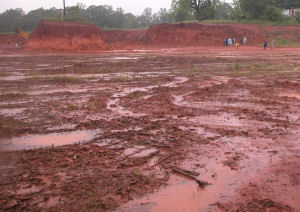
North Carolina State Art Medium: Clay
Clay became the official art medium of the State or North Carolina when Governor Pat McCrory signed mega-symbol House Bill No. 830 on June 26, 2013.
The five other symbols made official by mega-symbol House Bill No. 830 included:
- Official fossil of the State of North Carolina
- Official frog of the State of North Carolina
- Official salamander of the State of North Carolina
- Official marsupial of the State of North Carolina
- Official folk art of the State of North Carolina
GENERAL ASSEMBLY OF NORTH CAROLINA
SESSION 2013SESSION LAW 2013-189
HOUSE BILL 830AN ACT to adopt an official state fossil, frog, Salamander, marsupial, folk art, and art medium.
Whereas, some of North Carolina's official State symbols have been suggested by the State's school children after they have had history, science, social studies, or geography lessons related to North Carolina; and
Whereas, this year some of the suggestions range from the adoption of an official fossil to an official frog; and
Whereas, the State of North Carolina has a number of unique official symbols but does not have an official fossil, frog, salamander, marsupial, folk art, or art medium; and
Whereas, the megalodon shark is an extinct shark species that lived over 1.5 million years ago; and
Whereas, the megalodon shark may have reached over 40 feet in length and weighed up to 100 tons; and
Whereas, the megalodon shark had serrated, heart-shaped teeth that may have grown to over seven inches in length; and
Whereas, fossilized teeth of the megalodon shark have been found in North Carolina and throughout the world; and
Whereas, North Carolina and the Southeast region of the United States lead the world in amphibian diversity; and
Whereas, the pine barrens tree frog can be found in the Sandhills and Coastal Plain regions of North Carolina; and
Whereas, the pine barrens tree frog has been considered one of the most striking and beautiful frogs in the Southeast region of the United States; and
Whereas, the pine barrens tree frog by name reflects one of North Carolina's signature trees and ecosystems that have been a vital part of the State's economic, cultural, and natural history since colonial times; and
Whereas, North Carolina also leads the nation and world in salamander diversity, most notably in our Appalachian Mountains; and
Whereas, the marbled salamander is found throughout the State and is unique in that it is a charismatic, striking, chunky-bodied, fossorial amphibian, of which no two are exactly alike in color pattern; and
Whereas, according the North Carolina Wildlife Commission's 2005 North Carolina Wildlife Action Plan, the pine barrens tree frog and the marbled salamander have been identified as priority species for population monitoring and conservation in North Carolina; and
Whereas, the Virginia opossum is native to North Carolina and is the only marsupial found in North America; the female carries its underdeveloped young in a pouch until they are capable of living independently, similar to a kangaroo; and
Whereas, the Virginia opossum is one of the oldest and most primitive species of mammal found in North America; and
Whereas, the Virginia opossum is about the size of a large house cat with a triangular head; a long pointed nose; dark eyes; a long, scaly, prehensile tail; and short, black, leathery ears; and
Whereas, the Virginia opossum is nocturnal and lives in a wide variety of habitats, including deciduous forests, open woods, and farmland but prefers wet areas such as marshes, swamps, and streams; and
Whereas, at age 65, Vollis Simpson, a self-taught folk artist, began making giant windmills known as "whirligigs" at his home in Wilson, North Carolina; and
Whereas, Mr. Simpson's whirligigs have been exhibited at the North Carolina Museum of Art in Raleigh, the High Museum of Art in Atlanta, Georgia, and the Visionary Art Museum in Baltimore, Maryland, and at other locations, including New York, California, Canada, and England; and
Whereas, Mr. Simpson and details of his artwork have been featured in many national magazines and in several books; and
Whereas, the City of Wilson is developing the Vollis Simpson Whirligig Park to display a large collection of these whirligigs in historic downtown, which will be a one-of-a-kind destination for visitors; and
Whereas, North Carolina's clay-rich soil has contributed to the State's pottery heritage; and
Whereas, the use of clay has grown from the State's early Native Americans making mostly utilitarian wares and European settlers continuing the traditions of their ancestors to today's potters designing pottery with utilitarian and aesthetic elements; and
Whereas, the pottery tradition continues to thrive in North Carolina, especially in the Seagrove area, which includes parts of Chatham, Lee, Moore, Montgomery, and Randolph Counties; and
Whereas, clay continues to be an important art medium contributing to the State's cultural, social, and economic prosperity; Now, therefore,
The General Assembly of North Carolina enacts:
SECTION 1. Chapter 145 of the General Statutes is amended by adding the following new sections to read:
§ 145-41. State fossil.
The fossilized teeth of the megalodon shark is adopted as the official fossil of the State of North Carolina.
"§ 145-42. State frog.
The pine barrens tree frog (Hyla andersonii) is adopted as the official frog of the State of North Carolina.
"§ 145-43. State salamander.
The marbled salamander (Ambystoma opacum) is adopted as the official salamander of the State of North Carolina.
"§ 145-44. State marsupial.
The Virginia opossum (Didelphis virginiana) is adopted as the official marsupial of the State of North Carolina.
"§ 145-45. State folk art.
The whirligigs created by Vollis Simpson are adopted as the official folk art of the State of North Carolina.
"§ 145-46. State art medium.
Clay is adopted as the official art medium of the State of North Carolina."
SECTION 2. This act is effective when it becomes law.
In the General Assembly read three times and ratified this the 20th day of June, 2013.
s/ Philip E. Berger
President Pro Tempore of the Senate
s/ Thom Tillis
Speaker of the House of Representatives
s/ Pat McCrory
GovernorApproved 4:24 p.m. this 26th day of June, 2013
North Carolina Law
The following information was excerpted from the North Carolina General Statutes, Chapter 145, Section 145-46.
Chapter 145: State Symbols and Other Official Adoptions.
§ 145-46. State art medium.
§ 145-46. State art medium.
Clay is adopted as the official art medium of the State of North Carolina. (2013-189, s. 1.)
Sources...
"House Bill 830 / S.L. 2013-189." North Carolina General Assembly. State of North Carolina, 26 Jun 2013. Web. 10 Apr 2014.
"North Carolina General Statutes." North Carolina General Assembly. State of North Carolina. Web. 26 Mar 2014.
Additional Information
Clays of the Piedmont: Article by Dirk Frankenberg, Learn NC, The University of North Carolina.
Connecting to North Carolina's clay: Article by art professor Yun Nam, University of North Carolina at Chapel Hill.
Art in Clay: Masterworks of North Carolina Earthenware: Moving Art Exhibit.
North Carolina Pottery Center: Official website.
Carolina Clay Guild: Official website.
Seagrove Area Potters Association: Official website.
Western North Carolina Pottery Festival: Official website.
Soil Science Society of North Carolina: Official website.
More symbols & emblems: Complete list of official North Carolina state symbols from NETSTATE.COM.
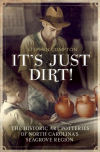
It's Just Dirt!
Stephen C. Compton Ph.D.
It's Just Dirt! The Historic Art Potteries of North Carolina's Seagrove Region, by Stephen C. Compton Ph.D. 192 pages. Publisher: Fonthill Media (May 13, 2014)
Located near the geographic heart of North Carolina, Seagrove is known as the pottery town. Though not the only place where pottery has been made in the state, when you say Seagrove to people, they suspect that you're talking about pottery. From its modest 18th century beginnings with a few Quaker potters from Pennsylvania and Nantucket, the Seagrove region today hosts more than one hundred potters. This is its history.
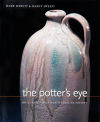
The Potter's Eye
Mark Hewitt
Nancy Sweezy
The Potter's Eye: Art and Tradition in North Carolina Pottery, by Mark Hewitt, Nancy Sweezy. 296 pages. Publisher: The University of North Carolina Press; First Edition edition (October 27, 2005)
Classic North Carolina stoneware pots--with their rich textures, monochromatic glazes, and minimal decoration--belong to one of America's most revered stoneware pottery traditions. In a lavishly illustrated celebration of that tradition, Mark Hewitt and Nancy Sweezy trace the history of North Carolina pottery from the nineteenth century to the present day. They demonstrate the intriguing historic and aesthetic relationships that link pots produced in North Carolina to pottery traditions in Europe and Asia, in New England, and in the neighboring state of South Carolina.
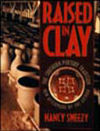
Raised in Clay
Nancy Sweezy
Raised in Clay: The Southern Pottery Tradition , by Nancy Sweezy. 284 pages. Publisher: PUniversity of North Carolina Press (August 1, 1994)
Raised in Clay is a remarkable portrait of pottery making in the South, one of the oldest and richest craft traditions in America. Focusing on more than thirty potters in North Carolina, Georgia, Alabama, Texas, Mississippi, and Kentucky, Nancy Sweezy tells how families preserve and practice the traditional art of pottery making today.
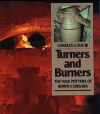
Turners and Burners
Charles G. Zug III
Turners and Burners: The Folk Potters of North Carolina, by Charles G. Zug III. 473 pages. Publisher: The University of North Carolina Press (February 1, 1990)
This richly illustrated portrait of North Carolina's pottery traditions tells the story of the generations of "turners and burners" whose creations are much admired for their strength and beauty. Perhaps no other state possesses such an active and extensive ceramic heritage, and one that is entirely continuous. This book is an attempt to understand both the past and the present, the now largely vanished world of the folk potter and the continuing achievements of his descendants.
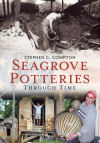
Seagrove Pottery
Through Time
Stephen C. Compton, Ph.D.
Seagrove Pottery Through Time, by Stephen C. Compton, Ph.D.. 96 pages. Publisher: Fonthill Media (January 7, 2014)
Located near the geographic heart of North Carolina, Randolph County's village of Seagrove is known far and wide as the 'pottery town'. The road from Seagrove to the Moore County town of Robbins is officially designated 'The Pottery Highway'. It's not the only place where pottery has been made in North Carolina, but when you say Seagrove to people who know the place, they suspect that you're talking about pottery.
Today, more than one hundred Seagrove area shops produce useful and decorative pottery, satisfying thousands of customers each year. Perhaps no other place in America can boast of a longer, unbroken pottery-making history than the North Carolina region called Seagrove. For more than two and a half centuries, it has been 'pottery central.'

